
views
Managing Double Envelopes

Decide whether to do double-envelopes. If you are planning a more informal affair, it’s okay to go with just one outer envelope. That way your invitees with open the envelope and see your invitation right away. If you prefer formality and tradition, opt for the double-envelope method. This means that your invitees will need to open two separate envelopes before seeing the event details. You can also consider the quality of the paper that you plan to use for your invitations. If the paper is high-quality and thicker, then a second envelope may not be necessary. And, it could add to the postage cost as well.

Be more formal with the outer envelopes. If you go with the two envelope style, then you’ll want to be consistently more formal with the outer ones and more casual with the inner ones. The outer envelope will contain titles and complete names. In contrast, the inner envelope can be addressed with simple first names and without accompanying titles. If you don’t know the invitee that well, it’s still okay to lean toward the more formal and include their full name on the inner envelope.
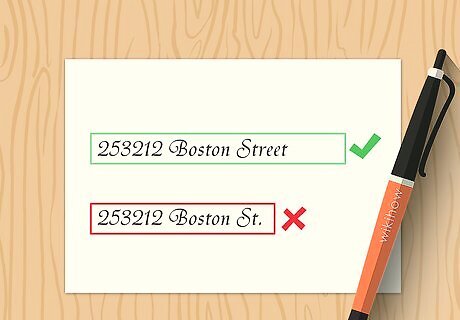
Use complete formal names and no abbreviations in the address. The outer envelope is generally considered more formal than the inner one. For that reason, you’ll want to use the full names of your invitees, not their simple initials. For the return and mailing addresses, spell out the full city and state names. Do the same thing with street locations. For example, in the addresses, you should put “Lane” instead of “Ln.” Try to include your invitees’ middle names. However, if you don’t have it, go with the initial or just use the first and last name.
Deciding on Manners of Address

Use Mr. and Mrs. for a married couple on the outer envelope. You can refer to both members of the couple by “Mr. and Mrs.” followed by the husband’s full name. However, this strikes some people as no longer appropriate for today’s society. You could also refer to a couple as “Mr. John and Mrs. Emily Perkins.” For the inner envelope, go ahead and shorten your greeting to, “John and Emily” or “John and Emily Perkins.”

Go with closeness if the couple has different last names. If you are inviting a married couple who go by their own last names, then the person who you feel closest to gets the first spot. If you are equally close to both people, then arrange them according to alphabetical order. For example, the outer envelope might look like, “Mr. Mike Smith and Mrs. Samantha Wise.”
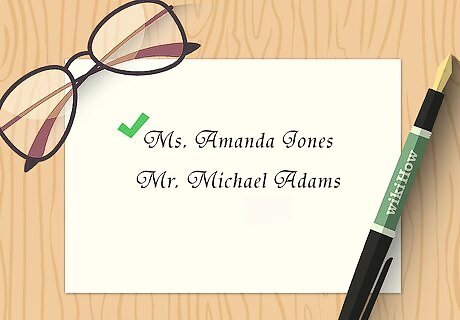
Put your closest friend first if a couple is unmarried and living together. The closeness rule also applies if you are sending an invite to an unmarried couple, except you use 2 lines. The first line is reserved for the person who you know best. The second line is for their partner. For example, the first line on the outer envelope might read, “Ms. Amanda Jones.” The second line might read, “Mr. Michael Adams.”
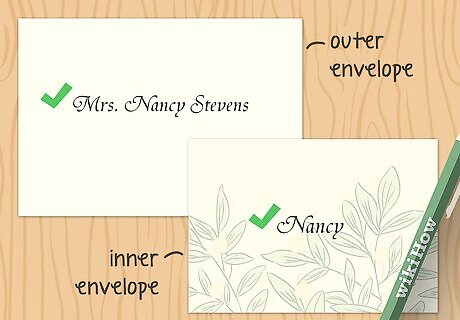
Gather additional information if you are inviting a widow. Reach out to a family member of the widow and ask if she prefers to use her first name followed by her married last name or her husband’s full name for events. If you can’t get this information or are unsure, go with her full name, just to be careful. For example, the outer envelope might state, “Mrs. Nancy Stevens,” or, with the husband’s full name, “Mrs. Charles Stevens.” For the inner envelope, shorten it to, “Mrs. Stevens,” or “Nancy.”
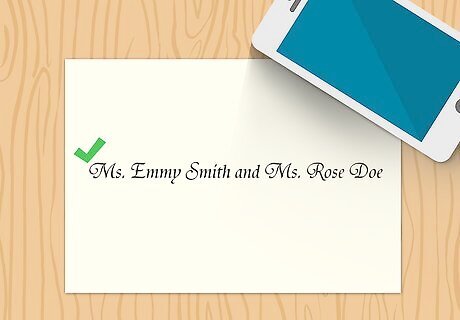
Follow the same rules for a same-sex couple. None of the rules really change if you are inviting a same-sex couple. If they are married, then both names should appear on the same line. If they are living together but unmarried, then go with separate lines.

Use honorifics if both parties are doctors. On the outer envelope, spell out the full “Doctors” before you list both of the names together. On the inner envelope, you can go with the “Dr.” abbreviation. Or, you can simply state “Doctors” and their last name. For example, the outer envelope will state, “Doctor Anne and Peter Thompson.” The inner envelope can show, “Doctors Thompson.”

Go into the next line, if needed, for honorifics. Some titles are quite long, but formality on the outer envelope requires that you list them in full. It’s okay to continue on to the line below if you need the space to write everything out. This usually isn’t an issue in the inner envelope since abbreviations are okay.
Inviting Children

Include children under 18 on the inner envelope. Kids’ names are not required on the outer envelope. However, for the inner one, list out the invited children on the second line in order of age. If you like, you can add “Miss” before each girl’s name. The under 18 boys have no parallel title. For example, the second line of the inner envelope might look like, “Michael, Miss Rebecca, and Steven.”

Send children over 18 their own invitation. For adult children living on their own or with their parents, send them a separate invitation. Use their full formal name on the outer envelope and the honorific “Mr.” or “Ms.” and their last name on the inner envelope.
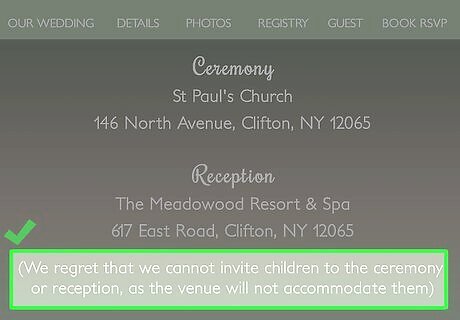
Don't name the children if they aren't invited. If you don’t list the children on the inner envelope, your guests should understand that they are not invited. However, be warned that not everyone follows this idea and some people may incorrectly assume that their children are invited to the wedding. Mention that children are not invited on your wedding website. Include your reason if you think it will help parents' understand. You might say, "We regret that we cannot invite children to the ceremony or reception, as the venue will not accommodate them." Follow up with families that may not have gotten the memo to make sure that they understand.
Following Good Invitation Practices
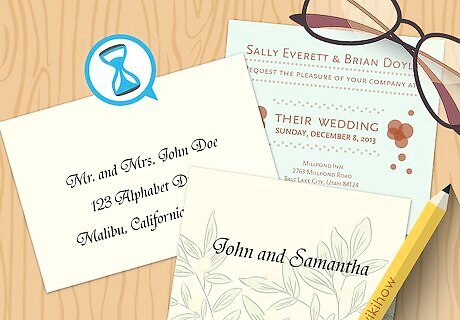
Give yourself plenty of time to assemble and mail. If you are sending out the invitations yourself, be warned that they may take a good amount of time to address, put together, and prepare for mailing. Set aside a few chunks of time where you will be able to devote your entire attention to this project.
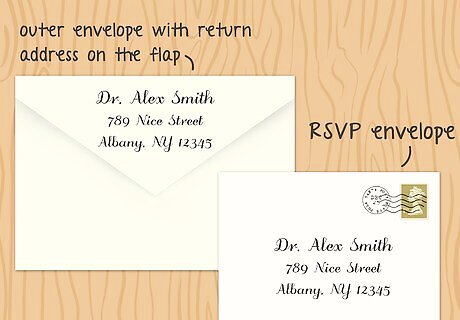
Consider which return and RSVP address to use. It’s best to use 1 address on both the return and RSVP areas. Otherwise, your guests may get confused and could send their RSVPs to the wrong spot. This should be an address that you check regularly.

Stuff the envelopes carefully. The inner envelope should remain unsealed and you should position it so that the flat side faces towards the flap of the outer envelope. Place the invitation so that the text faces the flap of the inner envelope. You want the invitee to open the inner envelope and instantly see the invite.
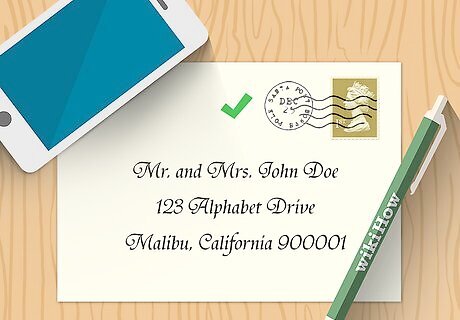
Weigh your invitations before mailing. Before you put stamps on all of your invites, go to the post office and place a single completed invite on the postage scale. You’ll see if you need extra postage in order to ensure that your invites will get to their destinations.
















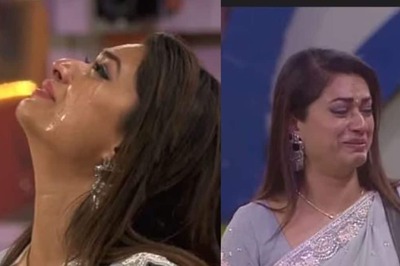



Comments
0 comment